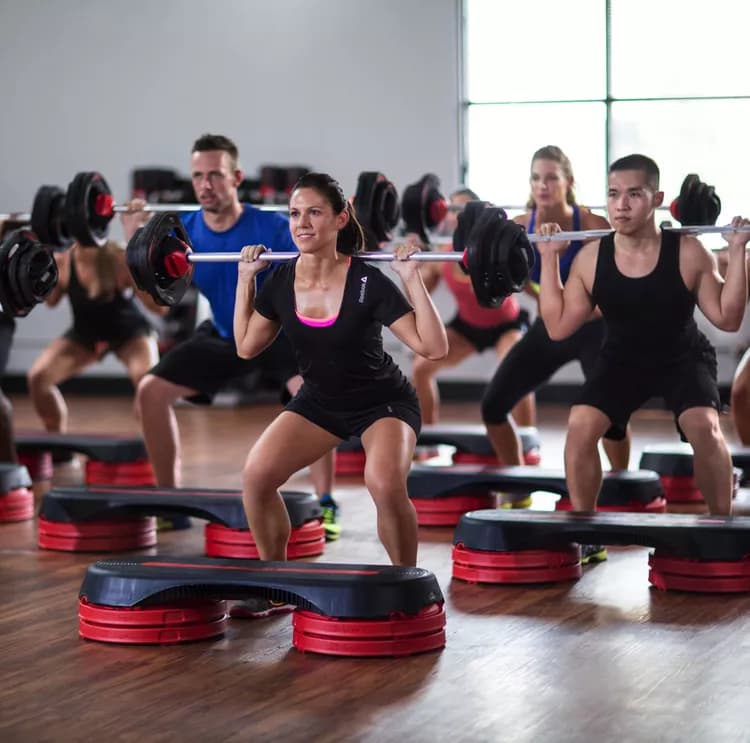
Study: Low-Weight, High-Repetition Exercise Increases Bone Density Up To 8 Percent In Adults
A new research study published in The Journal of Sports Medicine and Physical Fitness finds that low-weight, high-repetition resistance training increases bone mineral density in adults, challenging assumptions that heavy weight-training is required to build bone mineral density. Participants who completed the study experienced up to 8 percent bone mineral density increases in the legs, pelvis, arms and spine.
The findings indicate that this type of strength training may be an effective and maintainable method of increasing bone mineral density in older people and sedentary groups. A secondary finding indicates postmenopausal women and osteopenic individuals (those with low bone mineral density) would benefit most from a low-weight, high-repetition exercise regimen.
"These findings challenge the traditional thought that high-weight, low-repetition exercise is the ideal way to increase bone mineral density," said Jinger Gottschall, Associate Professor and lead researcher of the study conducted at Penn State. "This is such a profound finding because low-weight, high-repetition exercise is easily attainable by anybody and everybody. This approach could help at-risk populations minimize the risk of osteoporosis."
In the study, 20 untrained adults (people who completed less than 30 minutes of exercise per week for the previous six months) completed a 27-week group exercise program. Participants were assigned to one of two groups that either completed full-body weight-training workouts or workouts focused on building core muscles, in addition to cardiovascular workouts. The weight-training group completed two to three BODYPUMP(R); classes per week, a low-weight, high-repetition resistance training program in which the participants used a bar and self-selected weights.
The study analysis found:
- Participants in the weight-training group demonstrated an 8 percent increase in leg bone mineral density, a 7 percent increase in pelvis bone mineral density, a 4 percent increase in arm bone mineral density and a 4 percent increase in spine bone mineral density. The core group's bone mineral density did not change significantly.
- Postmenopausal women and osteopenic individuals experienced significant bone mineral density increases of up to 29 percent.
- A positive correlation between squat strength and pelvis bone mineral density, a link that indicates the exercises used in the study could effectively decrease the risk of a hip fracture.
Significant bone mineral density increases for osteopenic and postmenopausal people
Two osteopenic individuals and three postmenopausal women participated in the study, and both groups experienced much higher increases in bone mineral density than the rest of the group. Individuals with osteopenia experienced leg and pelvis bone mineral density increases of 29 percent, more than triple the results other participants experienced. The postmenopausal participants' bone mineral density increases ranged from 10 to 22 percent.
Pelvis and leg strength prevent fractures
In the study, people in the weight-training group experienced 25 percent greater increase in leg strength than those in the core group. Changes in leg strength were also strongly correlated with changes in pelvic bone mineral density.
According to the National Osteoporosis Foundation, by 2020 approximately 14 million people over the age of 50 are expected to have osteoporosis and another 47 million to have low bone mass.(1) After age 40, bone mineral density declines at an accelerated rate;(2) therefore, it is crucial to build a peak bone mass before this rapid decline and to maintain bone mass later in life.
The hip is the most common and devastating fracture site for elderly people with osteoporosis.(3) According to Gottschall, a large proportion of fall-related deaths are due to complications following a hip fracture. One out of five hip fracture patients die within a year of their injury. Maintaining a healthy bone mineral density in the pelvis and legs can help prevent these life-altering breaks, says Gottschall. High-repetition exercise is a great way for people to build full-body strength.
"Heavy weightlifting has been shown to increase bone mineral density, however many older and inactive adults cannot safely participate in this type of strenuous activity. The exercise regimen used in this study is a more feasible option," said Bryce Hastings, Group Fitness Research Officer, Les Mills International. "The beauty of LES MILLS BODYPUMP is that it is built on high-repetition choreography and instructors can identify progressive movement options for participants of any fitness level so they can build strength and bone density."
The above post is a redistributed news release provided by the Les Mills International. Note: Materials may be edited for content and length.
Disclaimer: DoveMed is not responsible for the adapted accuracy of news releases posted to DoveMed by contributing universities and institutions.
Primary Resource:
Petersen, B., Hastings, B., & Gottschall, J. S. (2015). Low load, high repetition resistance training increases bone mineral density in untrained adults. The Journal of sports medicine and physical fitness.
Related Articles
Test Your Knowledge
Asked by users
Related Centers
Related Specialties
Related Physicians
Related Procedures
Related Resources
Join DoveHubs
and connect with fellow professionals

0 Comments
Please log in to post a comment.